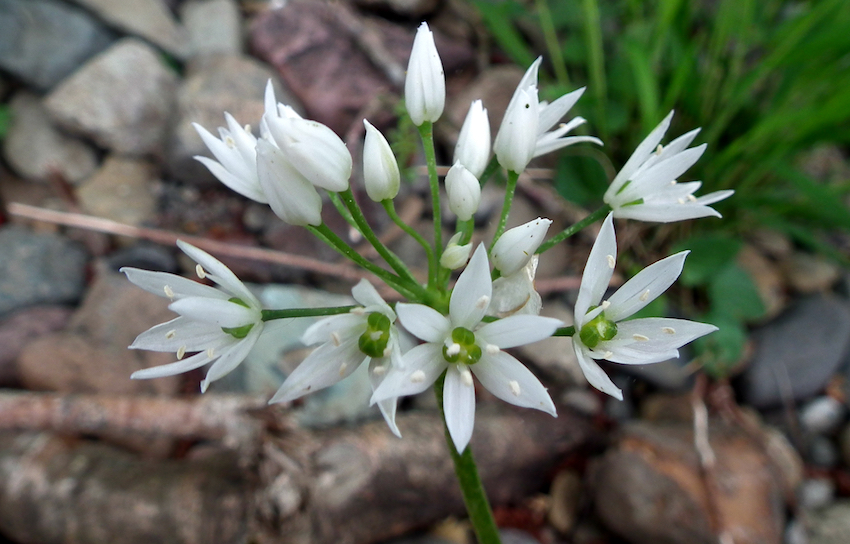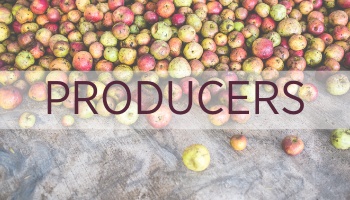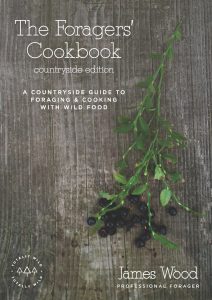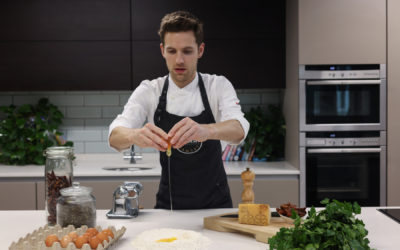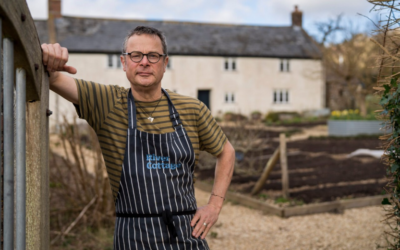One of the many joys of Spring is the appearance of fragrant wild garlic. This delicious ingredient grows in abundance, but few of us make the most of it. James Wood, author of The Foragers Cook Book, tells us more.
Wild garlic is found all over Europe, most of Asia and North America. It’s typically found in broad leaved woodland or a moist verge, preferring but not solely found on acidic soil. It tends to leaf and flower before the broad leaved trees come into leaf, and scents the whole woodland with the amazing smell of garlic.
Known botanically as ‘allium ursinum’, wild garlic is a bulbous, perennial plant, going into leaf from as early as January. Its leaves are spear shaped with a pointed tip, and can range from 5-15cms in length and 3-6cm wide, and each plant has one single flower head that sits on top of a solitary stem, shooting up from the centre of the connecting leaves.
Safety and plant identification
In flower, it looks like a white pompom perched on top of a pole. The white flower contains 6 petals ranging from 0.5-1cm in diameter. The root resembles that of a small but elongated clove of garlic.
Identifying wild garlic correctly is important – it could potentially be confused with both the poisonous leaves of Lilly of the Valley (Convallaria majalis) and Lords and Ladies (Arum maculatum), although neither of these smell of garlic. The biggest risk is to accidentally gather up Lords and Ladies leaves whilst collecting garlic leaves, as they often grow together.
Just like regular garlic, wild garlic is known to have medicinal uses – it can help to reduce blood pressure, therefore aiding heart disease and reducing the chances of a stroke. It also has antibacterial, antibiotic and antiseptic properties.
But there is, of course, no better use for wild garlic than cooking.
Cooking with wild garlic
“Throughout March and all the way through to June, I must eat this plant with at least one meal a day, if not more,” says James. “Whether it’s salted with a cheese board and strong elderberry port, diced and thrown into a punchy chilli or simply wilted down in a hot pan for 1 minute with a little butter as a side dish – I love the stuff!”
The roots and bulb are best harvested when the plant is not in leaf, from June to January. You can use the bulb as regular garlic, although be aware that it’s somewhat fibrous. The roots can be dried and powdered to be used as a seasoning, while the bulbs pickle well.
In early Spring, the leaves are great in a salad, and can be cooked as a vegetable, used as a wrap, blended as a pesto or used to flavour oil and leaf curd. In February and March, you can also use the flower buds to make tempura using the stem as a handle, while in March and April you can use the flowers in salads or as a garnish. In May and June, the immature seeds can be pickled or used in salads, while the mature seeds make a great condiment or spice.
It’s worth noting that there have been reports of toxicity if you’re eating sacks full of wild garlic, but such outcomes no doubt apply to many foods eaten to excess.
James’s wild garlic recipe suggestions
Wild Garlic Cream Cheese
This is one of the most simple ways I enjoy wild garlic – once made, it can be spread on a cracker with a little smoked salmon or be used to stuff a chicken breast before baking. You could also pass it through pasta to make a creamy wild garlic sauce, or you could mix it with grated cabbage and carrot to create a delicious wild garlic coleslaw.
Ingredients:
- 500g full fat cream cheese
- 50g wild garlic, finely chopped
- Plenty of salt and pepper
Method:
Place everything in a large bowl and mix thoroughly, add more wild garlic if you like it a little stronger and season to your taste. I blitz mine in a food processor until it’s really smooth and glossy.
Wild Garlic Pesto Pasta
The pesto I make with wild garlic is thick, chunky and delicious. It works with a huge range of recipes, from stuffing chicken to serving as wild garlic bread – and, of course, the classic pesto and pasta. We make a whole load when it’s in season, then bag it in zip-seal bags and keep it in the freezer for whenever it’s needed.
Ingredients:
- One hand/50g fresh Wild Garlic – stems and leaves
- One hand/50g Nettle tops
- 80g cob nuts – crushed (or mixed nuts)
- 80g hard cheese grated – parmesan
- 100ml olive oil
- Basil to taste
- 10 Sorrel leaves (or the juice of half a lemon)
- 400g penne pasta
Method:
Bring a pan of water to the boil, then add a pinch of salt and the dried pasta – this will take about 8 minutes in which time you can make the pesto. Chop the nettles and wild garlic into small pieces – use gloves so you don’t get stung. If you have a food processor, throw the nettle, wild garlic, cob nuts, sorrel leaves and basil in, and blitz very quickly, 10 seconds at a time so it’s well mixed but still crunchy. Once nettles have been blitzed or crushed they no longer sting.
If you don’t have a food processor, put the wild garlic, nettle tops, sorrel leaves and mixed nuts in a pestle and mortar and grind well, adding basil as you like (though I prefer it without). Once you have your garlic, nettle and nut paste mixed, put it in a bowl and add the grated cheese and oil until you reach a consistency your happy with, then simply season to taste.
Drain the pasta, place it in a large bowl and toss the pesto through it – this is particularly good with wild garlic bread and an extra sprinkling of parmesan cheese. Once made, you can store your pesto in the fridge for up to 2 weeks, or bag and freeze it to be used within 1 year.
Explore more of James’s wild food recipes in The Foragers Cook Book – get your copy here

